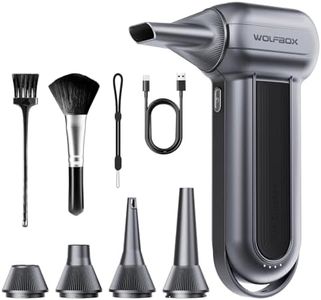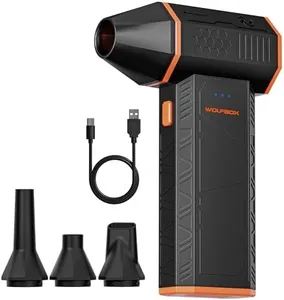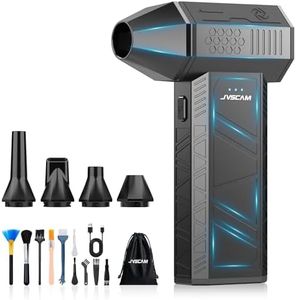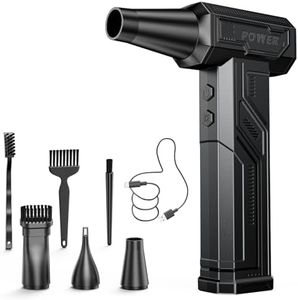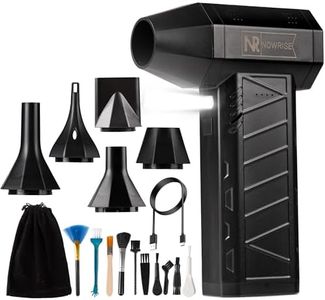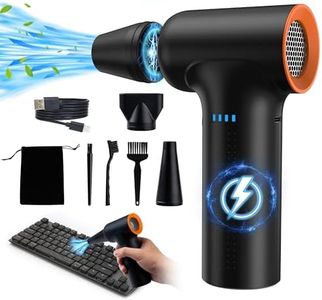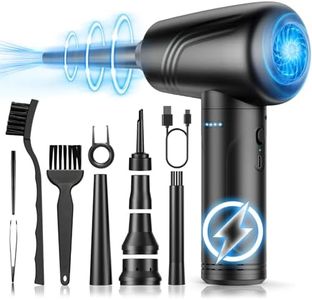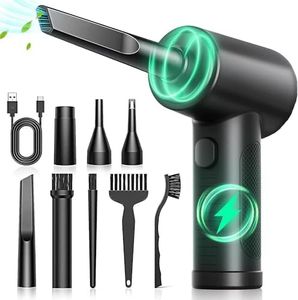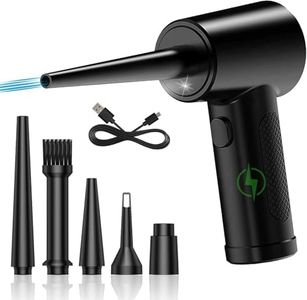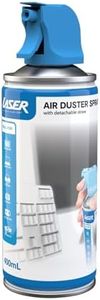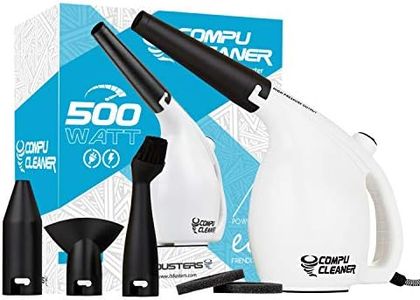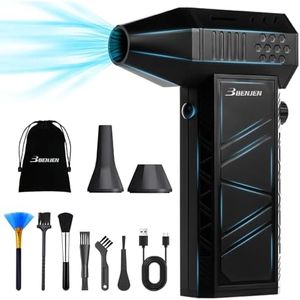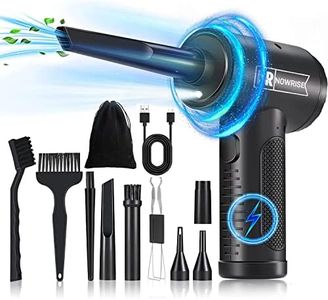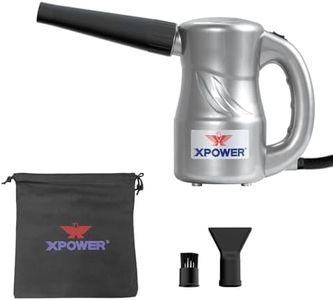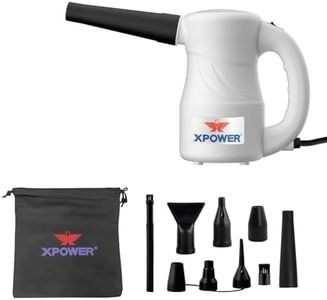We Use CookiesWe use cookies to enhance the security, performance,
functionality and for analytical and promotional activities. By continuing to browse this site you
are agreeing to our privacy policy
10 Best Compressed Air Dusters
From leading brands and best sellers available on the web.Buying Guide for the Best Compressed Air Dusters
Choosing the right compressed air duster is all about understanding how you'll use it and what features matter most for your tasks. Compressed air dusters help clean hard-to-reach areas, such as electronics, keyboards, and other delicate devices. Before picking one, think about what you plan to clean, how often you'll use it, whether you need portability, and any safety or environmental concerns you might have. Focusing on key features will help you select a model that fits your cleaning needs and personal preferences.Air PressureAir pressure refers to how forcefully the duster will blow out air, usually measured in pounds per square inch (PSI). High air pressure means the duster can remove more stubborn debris, but it can also be too strong for sensitive electronics. Typically, air dusters are divided into low, medium, and high PSI categories. Low PSI is gentle and good for delicate tasks, while medium PSI fits most standard needs, and high PSI is for tougher cleaning jobs. Choose the pressure based on the sensitivity and type of objects you'll be cleaning—delicate electronics need less pressure, while workspaces or machines may benefit from more.
Can Size or CapacityCan size dictates how much air you get per can before it runs out. Larger cans last longer and are better for frequent or extensive cleaning, while smaller cans are more portable and easier to handle but need to be replaced more often. If you have a lot of cleaning to do or prefer not to buy replacements all the time, a larger can is helpful. If you travel or only clean small items regularly, a smaller size might be more convenient.
Trigger TypeThe trigger controls the release of air and comes in different forms, such as simple push-button or trigger-style designs. A push-button is straightforward and easy for short bursts, whereas trigger-style offers more control over the airflow and tends to be more comfortable for longer use. Pick a trigger style that feels comfortable in your hand and matches your typical usage time.
Refillable vs. DisposableFull-sized compressed air dusters are usually disposable cans, while electronic or hand-pump versions are refillable and reusable. Disposable cans are convenient for occasional use, and refilling isn’t a concern, but they create more waste. Refillable models are better for frequent users and those concerned about environmental impact. If you're eco-conscious or expect to use the duster often, a refillable version is a good choice.
Included Nozzles and AccessoriesMany compressed air dusters come with additional nozzles or attachments, allowing for different spray patterns or access to tighter spots. Standard nozzles work for most surfaces, while thin straw-like nozzles help reach crevices. Consider whether you’ll need the flexibility that comes with extra attachments, especially if you’ll be cleaning varied or challenging spaces.
Safety FeaturesSome air dusters include safety mechanisms, like childproof caps or non-flammable gas, which are important for safe home or office use. If you’ll use your duster around children, pets, or sensitive electronics, prioritize models with enhanced safety features to avoid accidents or damage.
Environmental ConsiderationsSome compressed air dusters use eco-friendlier propellants or are designed to minimize environmental impact. If reducing your carbon footprint is a priority, look for products that market themselves as ozone-safe or have minimized greenhouse gases. This matters most if you plan frequent use or work in spaces with environmental restrictions.
